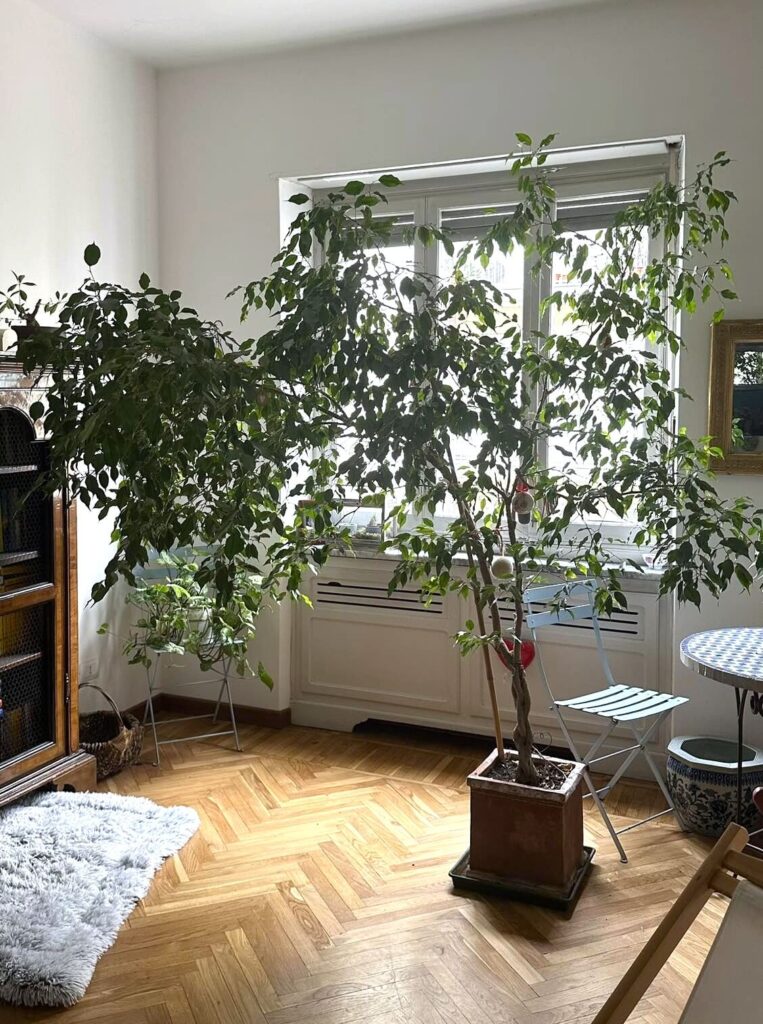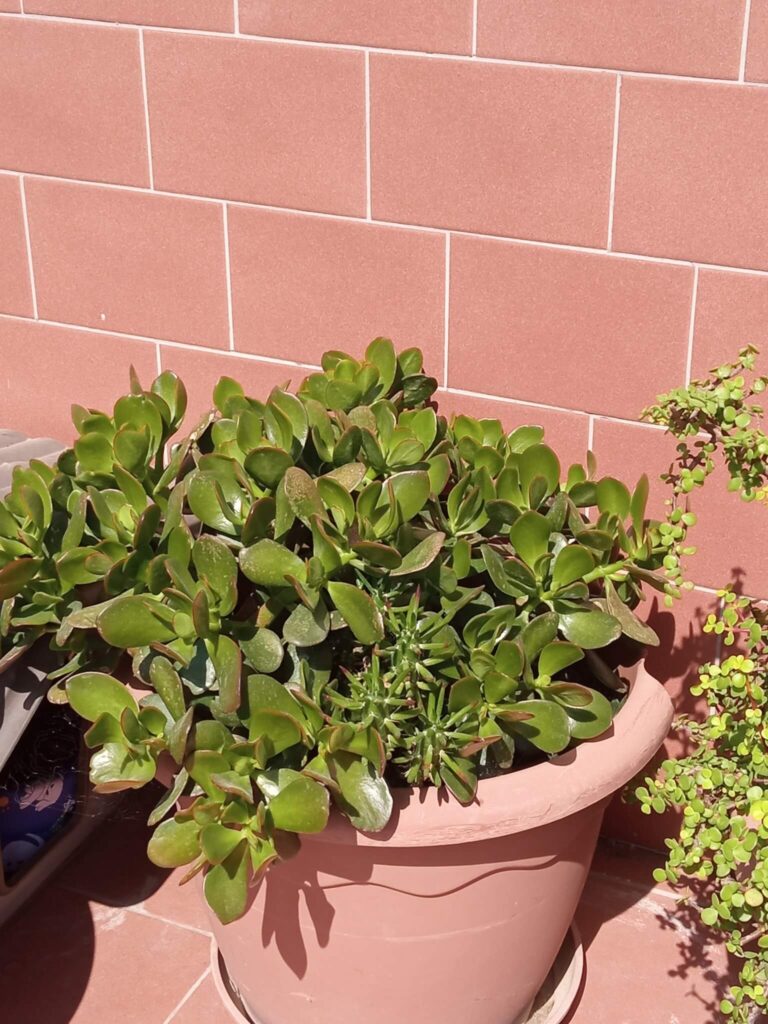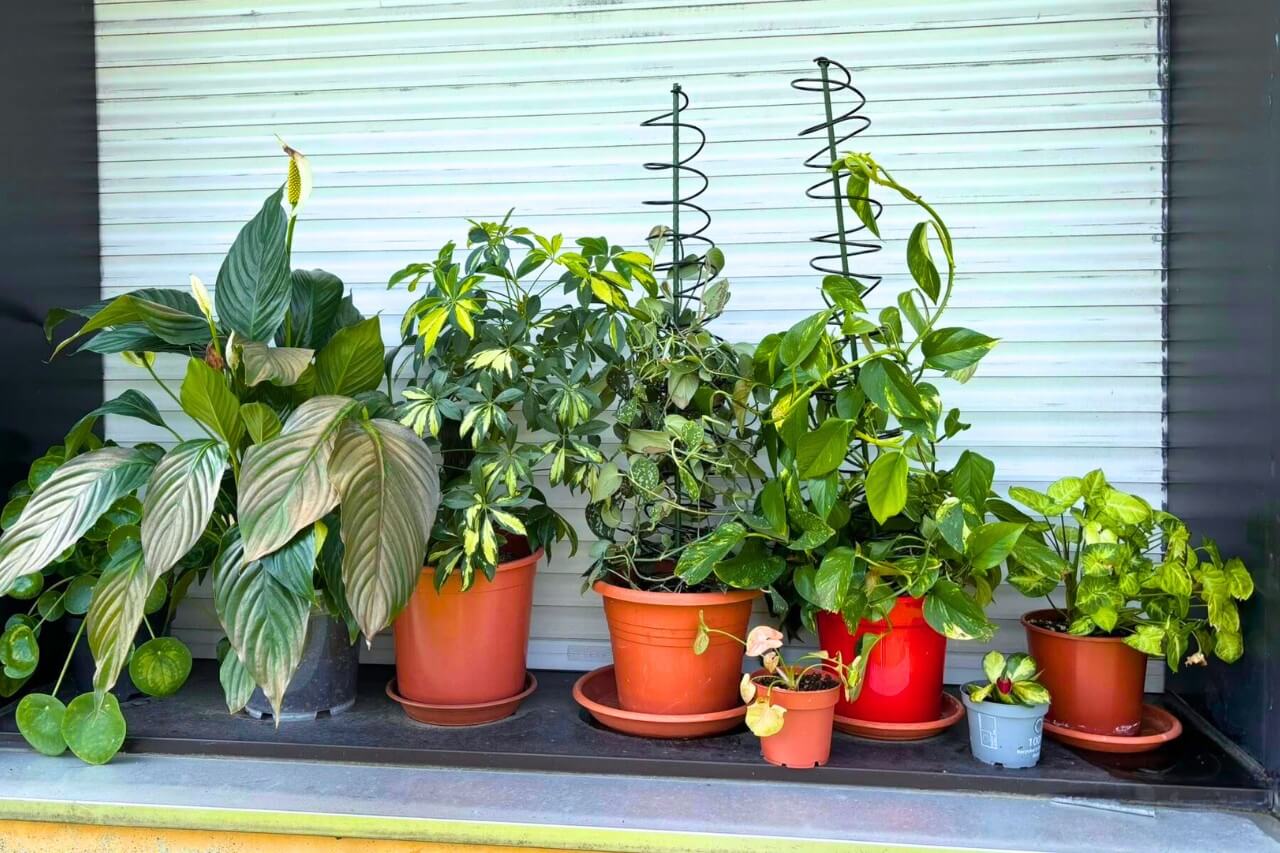I love having plants in my apartment, I could never live without them. They add so much color and completely change the vibe of a place (at least for me).
However, while adding plants indoor can brighten a home, some plants are best left outdoors.
Unfortunalelly, many popular garden plants are poisonous or high-maintenance, making them bad choices for pots in the living room.
I made a list with ones I think pose the most safety or practical problems (from toxins and allergens to care hassles), then of course you are free to make your own choices.
Oleander

Oleander is definitely an eye-catching flower plants, but it’s extremely poisonous.
In fact, all parts of the oleander plant (leaves, flowers, sap, seeds, etc.) contain potent heart-affecting toxins.
Even small ingestions can be fatal to people or pets and handling oleander can irritate the skin, and burning the plant releases toxic smoke.
Sago Palm
Despite its attractive fern-like fronds, the sago palm is very dangerous because every part of the plant is poisonous (especially its seeds).
Even a pet nibbling a single seed can suffer liver failure or death. The ASPCA reports that about half of pet poisoning cases from sago palms are fatal.
The Royal Horticultural Society also warns it’s “harmful if eaten” and can irritate skin.
Dieffenbachia
Dieffenbachia, often called “dumb cane” is famous as a houseplant, but for good reason it earned its name.
Its leaves and stems contain razor-sharp calcium oxalate crystals so chewing even a bit of this plant causes intense burning, swelling and pain in the mouth and throat.
All of that can make it hard to speak and this is why a bitten dieffenbachia can leave you temporarily “dumb”.
Since even a small bite is so dangerous, dumb cane is not a choice around curious kids or pets.
Ficus

Ficus trees (like the weeping fig) are becoming quite popular as indoor plants, my friend has a huge one is her apartment.
However, consider that their milky sap is a known skin allergen and irritant.
Some people get dermatitis from touching the leaves or sap and pets that chew ficus leaves may get an upset stomach or mouth irritation.
If you have sensitive or prone to dermatitis skin, it’s best to avoid keeping it indoors.
Philodendron (all species)
Philodendrons, including popular heartleaf or Monstera types, also contain calcium oxalate crystals like dieffenbachia.
Any part of the plant can cause immediate mouth irritation, drooling and swelling if chewed and ingesting even a small quantity also leads to stomach upset and vomiting in pets or people.
Philodendron species are very common as houseplants, but again experts reccomend to avoid them as indoors plants if you have children or animals.
English Ivy
English ivy is a classic climbing houseplant, but it’s quite toxic if ingested. Its leaves contain saponins that upset the stomach.
Pets or people who eat ivy often get vomiting, abdominal pain, drooling and diarrhea so recognize the syntoms as seek medical attention if you have that plant.
The sap can also cause skin irritation in sensitive people and since it spreads, it can also harbor pests like spider mites.
If you wanna make it grow it’s better to place it outside near walls or trellises.
Jade Plant

The jade plant (we call it the “money plant” in Italy, but I think in some other countries as well) is a popular indoor plant, but it has hidden dangers.
The ASPCA lists jade as toxic to dogs and cats as it can cause vomiting, depression, incoordination or worse. It is not yet clear why this plant causes these effects, but if it happens to your pet contact your veterinarian immediately.
Jade plants also demand very bright light, so indoors they often become leggy and weak, move it outside if you have one.
Peace Lily
Peace lilies are sold everywhere, but “peace” in its name is a bit misleading.
Like other plants we saw, all parts of it contain tiny insoluble calcium oxalate crystals so chewing a peace lily leaf causes sharp burning and swelling in the mouth and throat.
The good news is that, compared to other plants, they’re only mildly poisonous but if you have pets, it’s safer to choose a truly non-toxic plant or to move it to a higher place.
Aloe Vera

I know you’ll be surprised for this one, I was too when I first read it.
As you probably already know aloe vera is famous for its soothing gel, but the plant’s yellow sap is toxic to pets and can irritate people.
The toxic compounds (saponins and anthraquinones) in the aloe latex cause severe vomiting and diarrhea if ingested, and cats and dogs are especially sensitive to that.
Just to be 100% clear, it’s not the gel, it is extesivly used and has many positive effects, the toxic part is the yellow latex layer beneath the gel in the leaves.
In addition, remember to have a look at my guide on how to propagate Aloe Vera from leaf cuttings.
True Lilies
True lilies (such as Easter lilies or tiger lilies) are extremely dangerous for cats.
Ingestion of even a small part of a true lily (stems, petals or pollen) can cause severe kidney failure (while dogs and humans usually just get mild symptoms).
Because of this, cut lilies or potted lilies should be completely avoided if you share your home with a cat.
When choosing houseplants, stick to varieties known to be non-toxic. You can opt for the ones that grow well under trees because they’re used to shade and grow well indoors as well.

